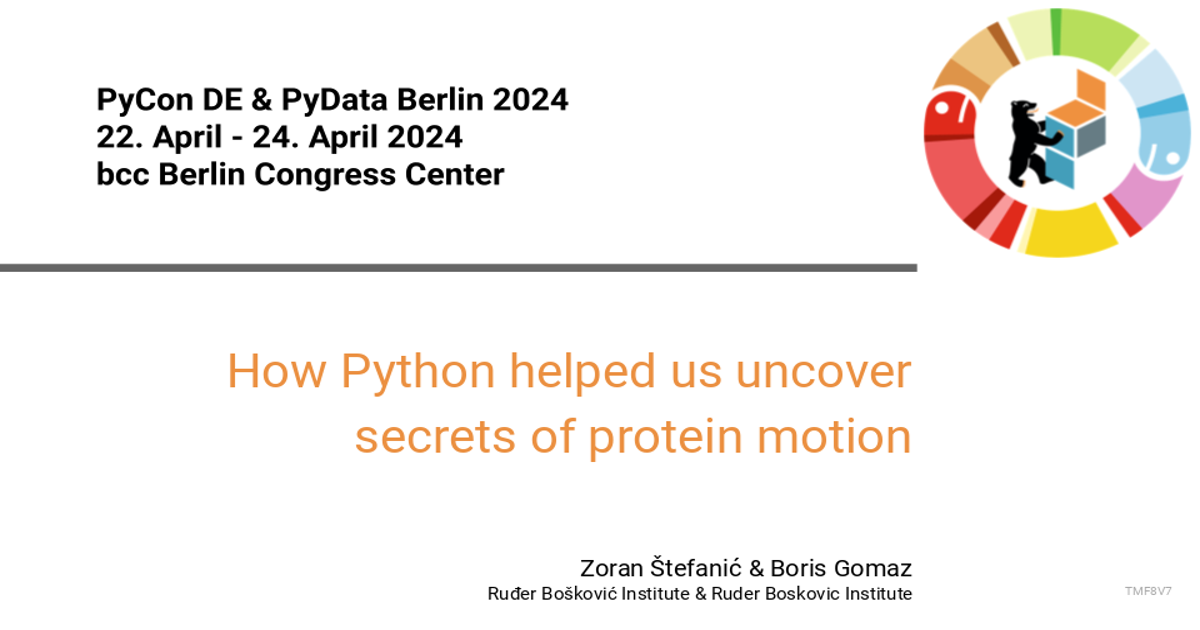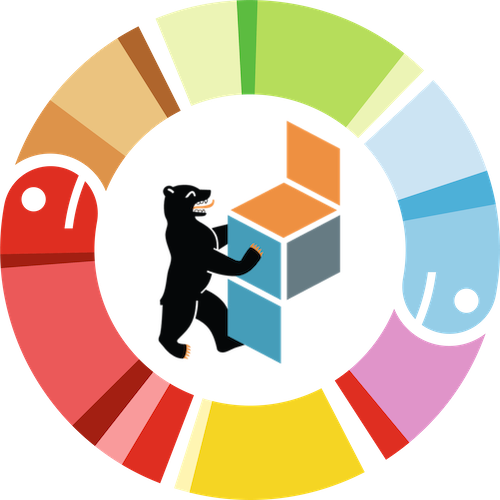How Python helped us uncover secrets of protein motion
Zoran Štefanić, Boris Gomaz
This presentation will give an overview of the scientific project that focuses on understanding how proteins move and function. Along the way a very large collection of Python tools was used, and on top of them our own innovative approaches are based. To be able to understand everything about living beings, including our health and origin of deseases in humans, we have to know how proteins do what they do. Hence is of utmost importance to understand their structure and function. Thanks to extraordinary technique called X-ray crystallography we are able to see how the proteins look at atomic scale, but it is impossible to see how they move. Therefore the next best thing we can do is to simulate the motion of the protein by so-called molecular dynamics (MD) simulations. These simulations generate incredible amounts of data, generally hundreds of GB of data per 1 microsecond of protein movement! Extracting useful and meaningful information from it is a daunting task. We are going to show how we have used many Python tools to tackle this problem in the project. Using Django to place everything in an interactive web app (https://alokomp.irb.hr/), along with Pandas, Numpy, Scipy, Dask, Jupyther, NetworkX, Bokeh, Datashader and many more under the hood, we have created an innovative new way of seeing protein move and communicate.
Zoran Štefanić
Affiliation: Ruđer Bošković Institute
Dr. Zoran Štefanić senior research associate and Head of the Laboratory for Chemical and Biological Crystallography at the Ruđer Bošković Institute. His main areas of expertise include: chemical crystallography of small organic molecules and hydrogen bonded networks, macromolecular crystallography, strong background in physics and mathematics, development of computer algorithms mainly in Python programming language, database design and web development. As the principal investigator of the ALOKOMP project, he is responsible for the overall coordination of the research and managing all activities between team members, organizational and financial matters, as well as for the publication of results, annual scientific and financial reports to the Croatian Science Foundation. More specifically in this project his tasks will be data collection and 3D structure determination of new enzyme structures, development of central relational database, programming of algorithms for data extraction, development of web server, and co-mentorship of PhD student.
visit the speaker at: Github • Homepage
Boris Gomaz
Affiliation: Ruder Boskovic Institute
A structural biology researcher enthusiastic about crystallography, molecular dynamics, and programming.

